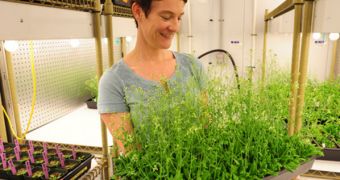One of the most interesting new lines of research in botany is the quest to understand how plants respond to external stimuli and actions, such as for example the force of gravity, touch and wind. Researchers at the Washington University in St. Louis (WUSL) lead the way in such studies.
The discovery of mechanosensitive channels in the 1980s represented a huge advancement in understanding the reactions plants have to being bloated with water, for example. These tiny pores can open under specific conditions, allowing water to rush out of the cell.
In past studies, researchers were able to discover a number of genes responsible for controlling the way in which these channels operate. At the same time, scientists were able to discover 7 types of channels, but many believe that a lot more have yet to be discovered.
WUSL Department of Arts & Sciences assistant professor of biology Elizabeth Haswell, PhD, has been studying these channels for many years. She is convinced that numerous mechanosensitive channels await discovery still.
“Picture yourself hiking through the woods or walking across a lawn. Now ask yourself: Do the bushes know that someone is brushing past them? Does the grass know that it is being crushed underfoot? Of course, plants don’t think thoughts, but they do respond to being touched in a number of ways,” she says.
“It’s clear that plants can respond to physical stimuli, such as gravity or touch. Roots grow down, a ‘sensitive plant’ folds its leaves, and a vine twines around a trellis. But we’re just beginning to find out how they do it,” the expert adds.
In the October 11 issue of the esteemed journal Structure, Haswell and her team of investigator at the California Institute of Technology (Caltech) published an overview of the entire body of work published on this channels thus far. The paper is meant to put all data in a single place.
What became immediately apparent is that researchers are just beginning to scratch the surface of how plants communicate with the outside world. A large number of important findings – of the kind that can change the way scientists view a certain species – was made only in recent years.
Scientists have now gotten to a point where they are working so deep within the plant itself that the technology we currently have access to is no longer capable of providing the insight we require.

 14 DAY TRIAL //
14 DAY TRIAL //